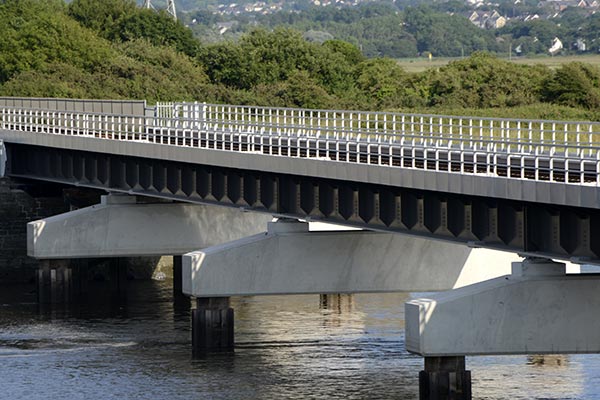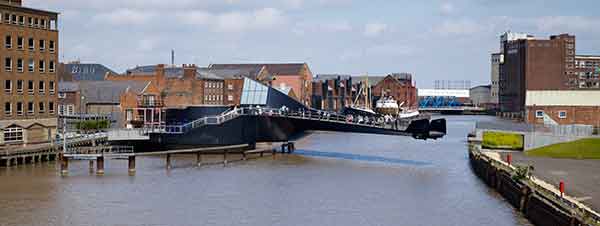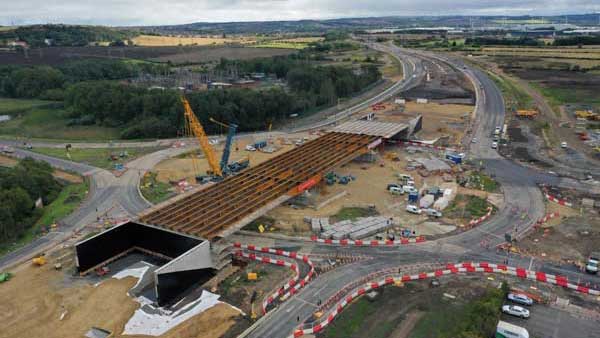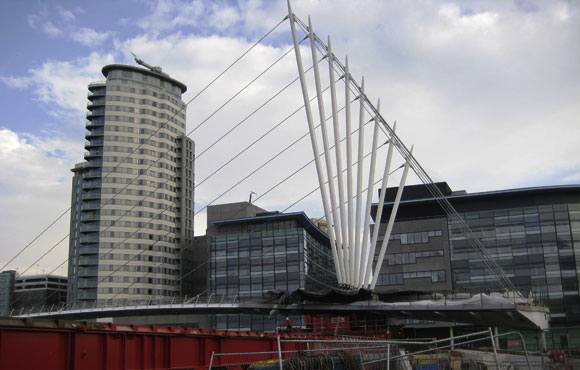SSDA Awards
Commendation – Loughor Viaduct Replacement, South Wales
 The rail line heading west from Swansea has been significantly improved with the opening of the new steel composite Loughor Viaduct.
The rail line heading west from Swansea has been significantly improved with the opening of the new steel composite Loughor Viaduct.
FACT FILE
Structural engineer: Tony Gee and Partners LLP
Steelwork Contractor: Mabey Bridge
Main Contractor: Carillion Rail
Client: Network RailThe new replacement steel composite designed Loughor Viaduct has reinstated a double track rail service across the South Wales estuary, improving travel times between Swansea and Llanelli and boosting the local economy.
Originally constructed in 1852, the 236m long viaduct was initially a wooden structure and a fine example of Isambard Kingdom Brunel’s once numerous timber viaducts.
Recent detailed site investigations had determined that the old viaduct had reached the end of its life.
In order to improve rail services and restore the line to a double track configuration Network Rail, working with Carillion Rail, opted to replace the entire structure as part of a £48M scheme.
“The new bridge has a total of seven spans, five of which are 36m long, this design was best achieved using steelwork,” says Chris Young, Tony Gee and Partners Regional Director. “Plus we had to have a soffit which mimicked the existing structure’s low profile for environmental reasons, again another reason for choosing steel.”
A primary consideration was how the new viaduct could be constructed within a limited 249-hour blockade provided by Network Rail.
“Before commencing the steelwork on site we had to construct our temporary works and the new bridge piers in a high flow tidal estuary working from both sides of the existing viaduct,” says Jon Kite, Carillion Rail Senior Project Manager.
At the same time as this work was being undertaken steelwork contractor Mabey Bridge began a three-month programme, fabricating the structural steelwork and walkways at its facility in Chepstow.
Mabey Bridge was also contracted to oversee site assembly, including the supply of temporary pier cross beams to support the launch of the new structure. These beams were installed atop six temporary piers that had been installed on the north side of the existing viaduct.
“Once the first section was fully assembled we launched it using strand jacks over the river onto temporary piers,” explains Roger Walker, Mabey Bridge Project Manager. “We then assembled the next section, bolted it onto the previous section and launched the structure a bit further over the river.”
This process was repeated a further three times, to position the entire new viaduct, spanning the Loughor estuary adjacent to the old existing structure. The steelwork was then jacked down onto its permanent bearings and then the deck was concreted, waterproofed, ballasted and tracks laid.
The 249-hour rail possession was then initiated and work began to demolish the old structure. After putting protective matting over the rail tracks, Carillion used the new bridge as a working deck for its demolition equipment.
Once the old structure had been dismantled and new abutments constructed the new viaduct was slid sideways on its bearings to its permanent location using hydraulic rams.
Judges’ Comment
Replacement of the existing single-track, Brunel inspired viaduct, imposed major demands on the team. The practical design of the new twin-track crossing assisted the prefabrication on site of the steel girder deck, which was then launched and slid into place within a 249-hour blockade.
A heroic and successful achievement.












